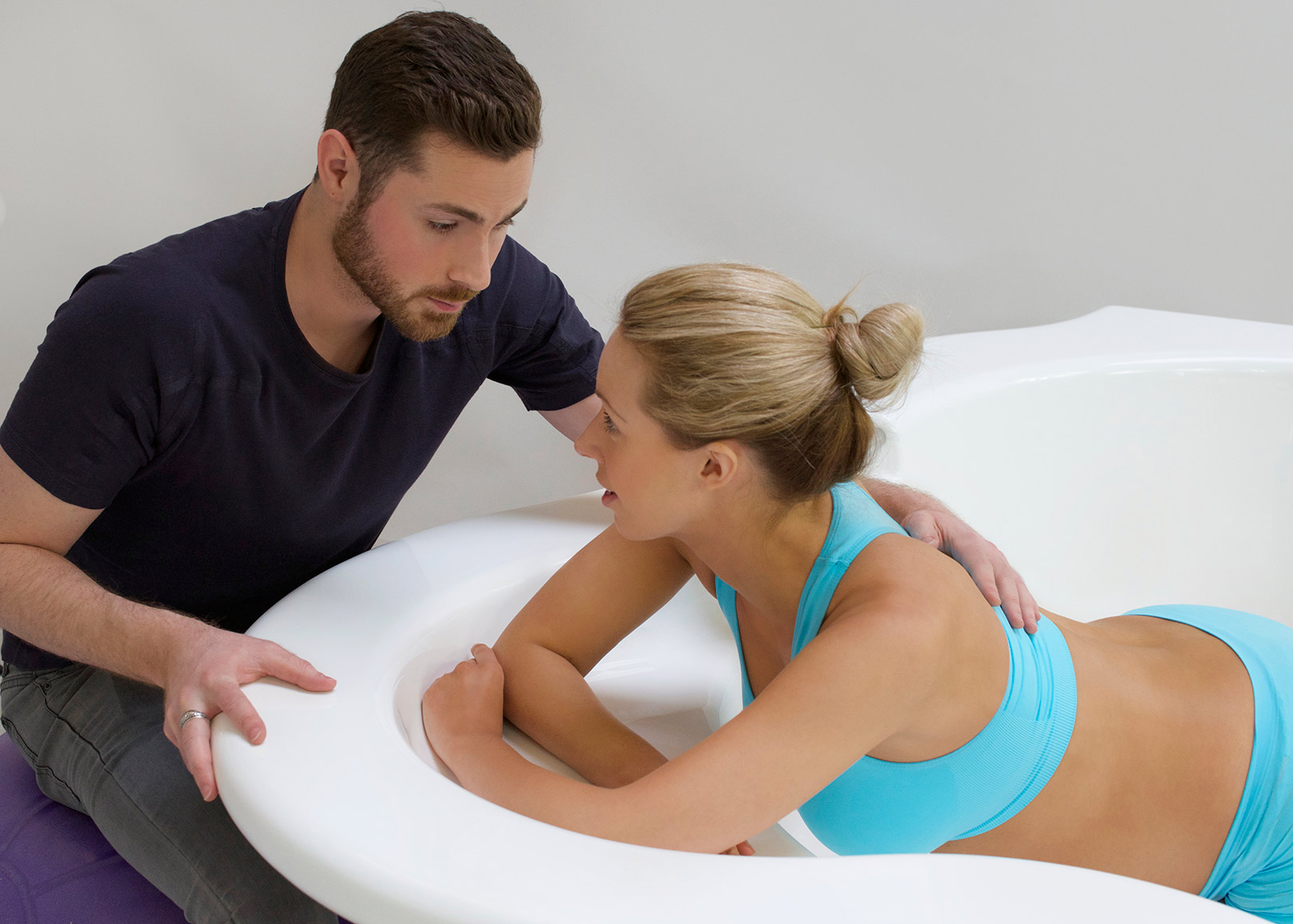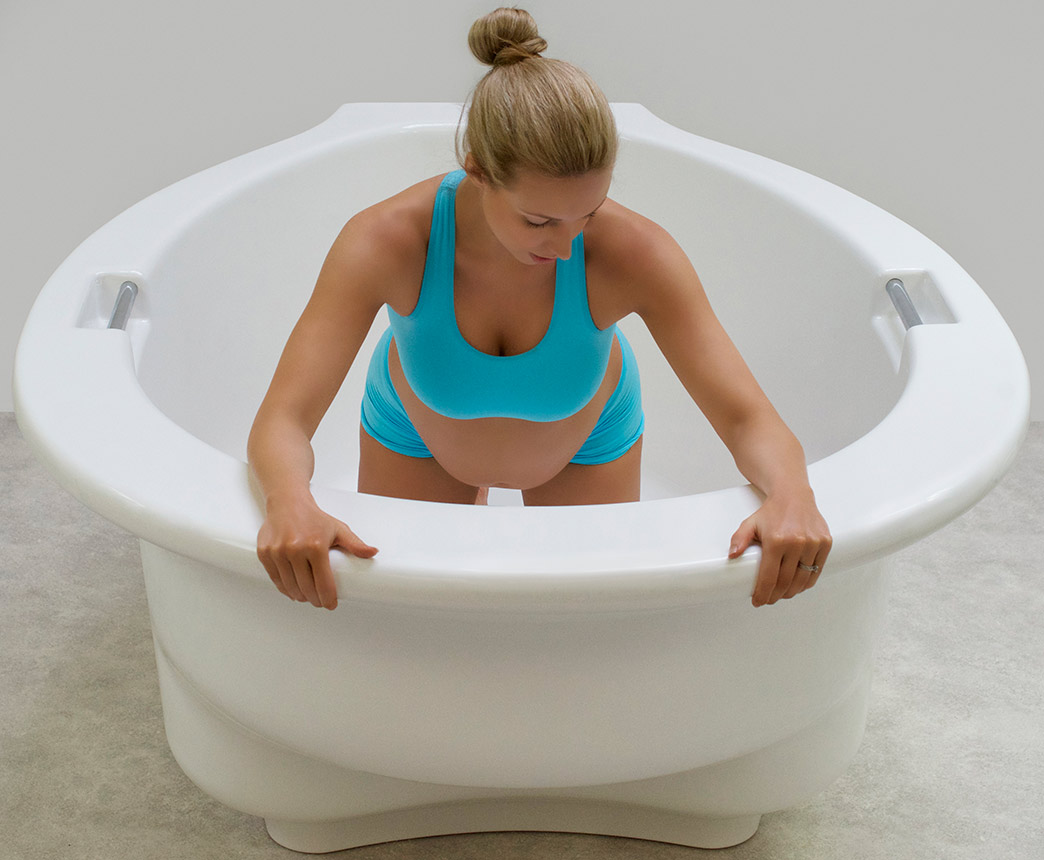In light of the publication of recent articles that report the growing demand from women around the world who want to have a natural, drug free, non-medicalised birth (Weiss 2014 and Gilbert 2015) we need to look at ways to help them have this experience.
If they are not going be reliant on analgesia for pain relief they need options to help them cope with the pain to allow a physiological labor to unfold.
Immersion in warm water has been unequivocally proven to be of great benefit both physiologically and psychologically.
It is not important if the baby is born in water.
In fact, water birth should be de-emphasised as it is a controversial issue in many parts of the world.
The key point and main benefit that needs to be made and focused on is how women who enter a warm pool of water in established labour with strong contractions find that they are able to cope with the pain and have a natural birth.
Women have a greater sense of fulfillment and accomplishment and babies experience a non-traumatic birth.
Aside from the obvious benefits to mothers and babies, midwives experience greater job satisfaction and hospitals save money and optimise resources from the reduced use of analgesia, medical intervention and shorter hospital stays.
Nearly a third of women benefited from the use of a water birth pool in the UK in 2014 (National Maternity Survey 2014).
With up to 60% of mothers open to natural birth now is the time for midwives, obstetricians and hospitals to consider making this safe, low cost option available.
Studies have shown that upright labour positions are associated with a reduced second stage, fewer episiotomies or instrumental intervention in contrast to mothers labouring on their backs. (Gupta, Hofmeyr and Shehmar 2012 and Gupta and Nikodem 2000).
Many women also feel empowered in an upright position, and experience a sense of control over their labour (Balaskas 2001).
On land women need to contend with the force of gravity that limits their ability to assume upright postures especially as labour progresses and they feel tired.
Many women do not have the fitness or stamina to maintain upright postures for lengths of time. (Gupta JK, Hofmeyr GJ, Smyth R 2007).
The transition from the land to water helps revive and energise the mother giving her a new lease on life and sense of purpose.
The buoyancy of water supports the mother reducing her relative weight by approx. 33% (Archimedes Principle) allowing her to easily explore the full range of beneficial upright positions in comfort and move in ways that were not possible on land.
The calming, relaxing effect of the warm water promotes the flow of oxytocin, a powerful hormone that plays a huge role in childbirth, causing the uterus to contract and triggering the ‘fetal ejection reflex’.
Michel Odent has expounded upon the beneficial physiological effect that immersion in water during labour has on hormone secretion, including observations that women entering warm water experience oxytocin surges which can advance dilation and stimulate contractions (Odent 2014).
The economic impact
Studies have shown that women who are supported during labour need to have fewer painkillers, experience fewer interventions and give birth to stronger babies.
A focus on normalising birth results in better quality, safer care for mothers and their babies with an improved experience.
Increasing normal births is associated with shorter (or no) hospital stays, fewer adverse incidents and admissions to neonatal unit and better health outcomes for mothers.
It is also associated with higher rates of successful breastfeeding and a more positive birth experience.
These changes benefit not only women and their families but also maternity staff.
Midwives are able to spend less time on non-clinical tasks and more on caring for women and their babies.
Psychologically speaking, and in particular for first time mothers, the less intervention and a more hands on approach with one-to-one support means that mothers will leave hospital feeling held and therefore far better prepared for motherhood.
This again has a domino effect, not just on the welfare of the infant, but also circumventing the need for costly government and interventionist approaches in particular for younger mothers post-partum.

The experience of hospitals that have birth pools demonstrates the savings achieved through reduced use of medical methods of pain relief and shorter hospital stays.



